How much do you know about Toyotomi Hideyoshi? Despite his humble origins, Hideyoshi rose to power by winning the favor of Oda Nobunaga, exemplified by episodes like warming Nobunaga’s sandals with his body on a cold winter day. Using his natural charisma, he climbed the ranks and eventually became the first samurai to unify Japan.
There are many episodes that showcase his remarkable ability to win people’s hearts. However, it is also said that he had a cruel side. Do you know what kind of person Toyotomi Hideyoshi was and what he accomplished? In this article, we will introduce some lesser-known facts about Toyotomi Hideyoshi.
What did Toyotomi Hideyoshi do?
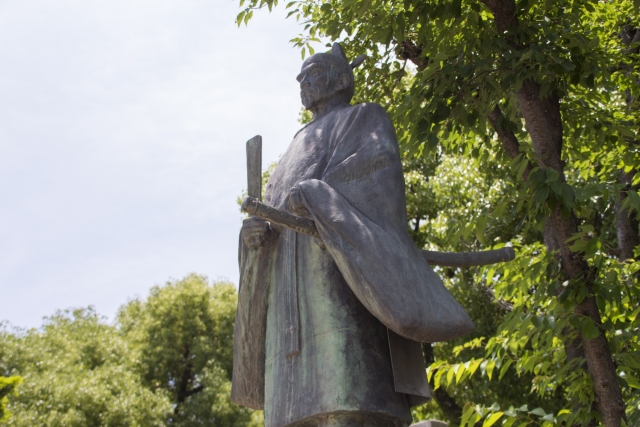
Toyotomi Hideyoshi, born into a poor family, eventually unified Japan during the Sengoku period. He was born in Nakamura, Owari, and his childhood name was Hiyoshi-maru. Aspiring to become a samurai at a young age, he began serving Oda Nobunaga at the age of 15. Initially, he was known as Kinoshita Tōkichirō, but due to his military achievements, Nobunaga promoted him as an important retainer, granting him the surname Hashiba and making him the lord of Nagahama Castle in Ōmi Province.
During the Incident at Honnōji, he was leading an attack on the Mōri clan. Upon learning of Nobunaga’s death, he quickly returned his troops and defeated Akechi Mitsuhide at the Battle of Yamazaki. He then defeated Shibata Katsuie at the Battle of Shizugatake and began expanding his power, including the construction of Osaka Castle. In 1585, he was appointed Kampaku (Imperial Regent), and the following year, he became the Daijō-daijin (Chief Minister) and was granted the surname Toyotomi.
During his rule, he unified Japan through military campaigns such as the subjugation of Shikoku, Kyushu, and Odawara, and also pacified the northern regions. Politically, he implemented the Taikō land survey, the sword hunt, and established the Kyōmasu (Kyoto standard of measurement), strengthening the management of land and people, laying the foundation for the early modern bakuhan (feudal domain) system.
In 1591, he relinquished the position of Kampaku to his adopted son Hidetsugu and then attempted invasions of Korea and the Ming dynasty, although these were unsuccessful. Toyotomi Hideyoshi is also known for the luxurious and extravagant Momoyama culture that flourished during his rule. The construction of Osaka Castle and Jurakudai are prime examples of this cultural legacy. His various policies and cultural contributions continued to significantly impact Japanese history even after his death.
Toyotomi Hideyoshi’s Simplified Timeline
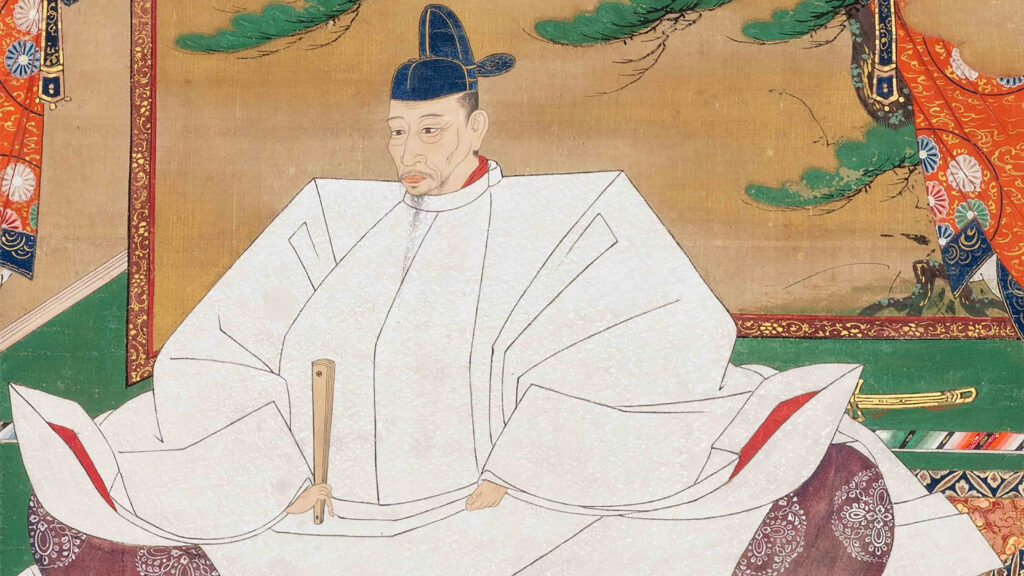
それでは豊臣秀吉が具体的にどんな生涯を送ってきたのか簡単な年表形式で見ていきましょう。
| Year | Event |
| 1537 | Born in Owari Province |
| 1554 | Entered the service of Oda Nobunaga |
| 1582 | Defeated Akechi Mitsuhide at the Battle of Yamazaki after the Incident at Honnōji |
| 1582 | Taikō land survey |
| 1585 | Appointed Kampaku (Imperial Regent) |
| 1587 | Expulsion of Christian missionaries |
| 1588 | Sword hunt edict |
| 1590 | Unification of Japan |
| 1591 | Enactment of class separation edict |
| 1592・1597 | Invasions of Korea (Bunroku Campaign, Keicho Campaign) |
| 1598 | Passed away |
Battle of Yamazaki in 1582
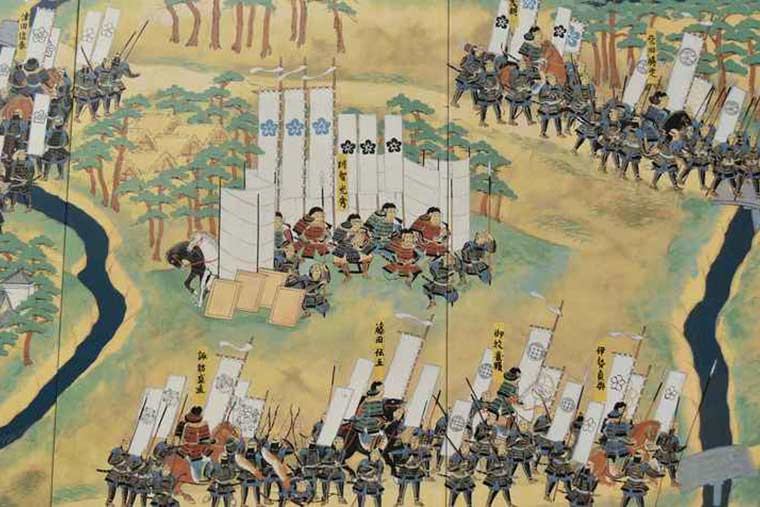
The Battle of Yamazaki on July 2, 1582, marked a crucial turning point in Japanese history. In this battle, Toyotomi Hideyoshi defeated Akechi Mitsuhide, a former ally and the assassin of Oda Nobunaga. Nobunaga was nearing the unification of Japan but was forced to commit suicide due to Mitsuhide’s betrayal in the Incident at Honnōji just 11 days earlier.
At that time, Hideyoshi was fighting the Mōri clan in Bitchū Province (present-day Okayama Prefecture). Upon receiving news of Nobunaga’s death, he halted his campaign against the Mōri and quickly marched to Kyoto. This swift maneuver is famously known as the “Great Retreat from Chūgoku.” Once back in Kyoto, Hideyoshi confronted Mitsuhide and achieved a decisive victory.
Taikō Land Survey in 1582
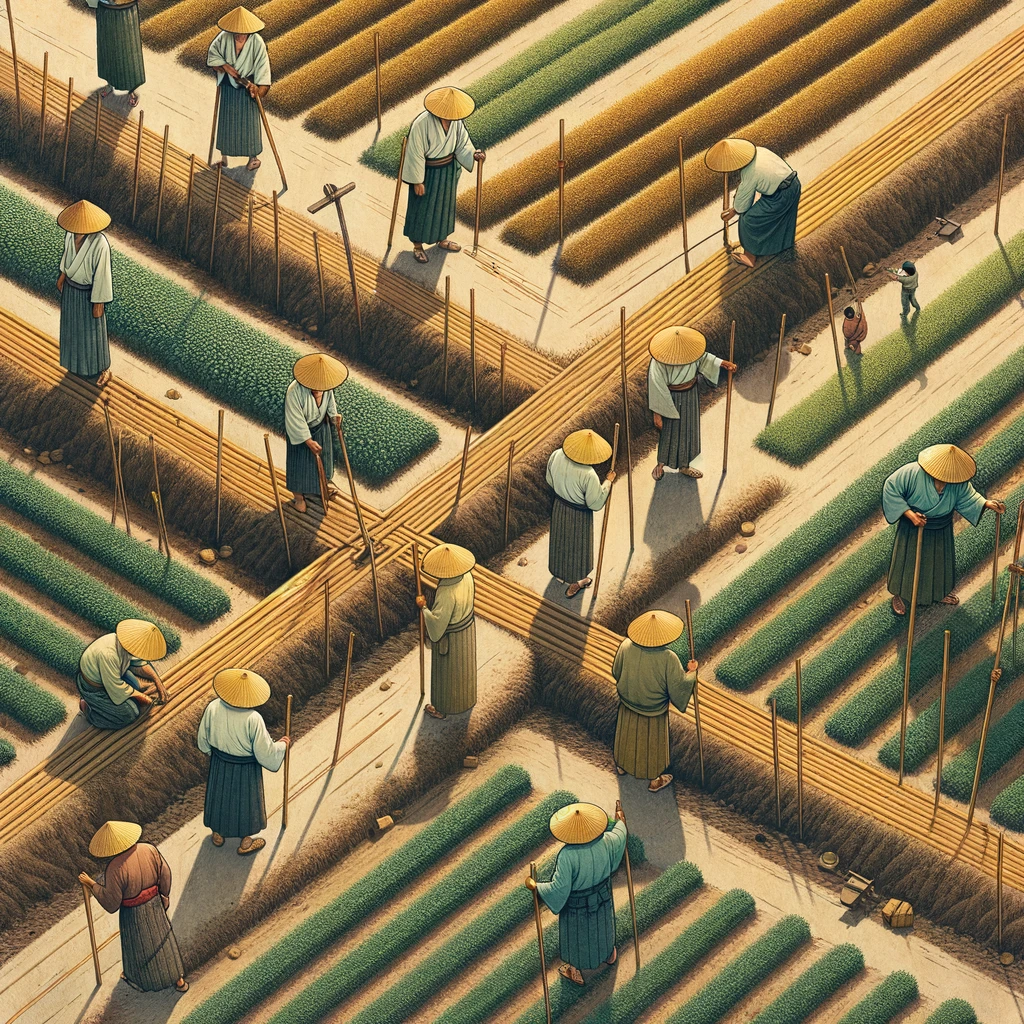
The Taikō land survey was a nationwide land measurement and assessment project implemented by Toyotomi Hideyoshi. This survey aimed to accurately determine the area and yield of rice paddies and fields, expressing the land’s productivity in terms of the kokudaka system (a system measuring land value based on rice yield).
The survey used a standardized unit of measurement across the country, replacing the previously inconsistent methods, which allowed for precise measurement of production. This enabled the ranking of land and visualized the national production levels. As a result, it facilitated the fair collection of taxes.
Additionally, the Taikō land survey established the system of “one village, one cultivator,” clearly defining which farmers were responsible for paying taxes on which lands. This system also contributed to the disappearance of the shōen (manorial) system that had persisted since the Nara period.
Appointment as Kampaku in 1585
In July 1585, Toyotomi Hideyoshi assumed the position of Kampaku, a highly significant role in Japanese politics. The Kampaku was responsible for assisting the Emperor and executing government affairs, making Hideyoshi the second-highest-ranking official in Japan. This position was typically reserved for individuals from the Fujiwara clan, but Hideyoshi overcame this traditional restriction by being adopted by Konoe Sakihisa, thus gaining the eligibility for the position.
By becoming Kampaku, Hideyoshi was able to bring the authority of the imperial court to bear in his control over the various warlords across Japan. Those who opposed him were seen as enemies of the court, providing a legitimate reason for their subjugation. Additionally, the year after becoming Kampaku, Hideyoshi was granted the surname “Toyotomi” by Emperor Ōgimachi, replacing his previous name “Hashiba.”
Expulsion of Christian Missionaries in 1587
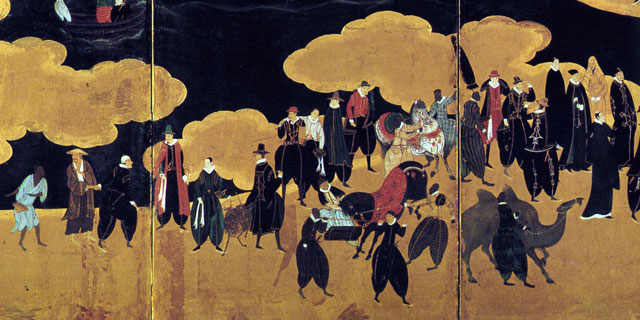
On July 24, 1587, Toyotomi Hideyoshi issued the Bateren Tsuihōrei, an important decree banning the propagation of Christianity. This decree restricted Christian activities in Japan and ordered the expulsion of many European missionaries, particularly from Portugal and Spain.
At that time, Christianity was rapidly spreading in Japan, and initially, Hideyoshi tolerated this new religion. However, incidents such as Christians destroying Buddhist temples and Japanese people being sold as slaves to Europe led him to believe that these actions were negatively affecting Japan’s order and society. These concerns were the primary reasons for the prohibition of Christian propagation.
However, Hideyoshi was more wary of the political and cultural influence wielded by the missionaries rather than Christianity itself. As a result, while missionary activities were banned, trade with the Europeans continued to be encouraged due to the benefits and the valuable technology and knowledge that could be obtained from them.
Sword Hunt Edict in 1588
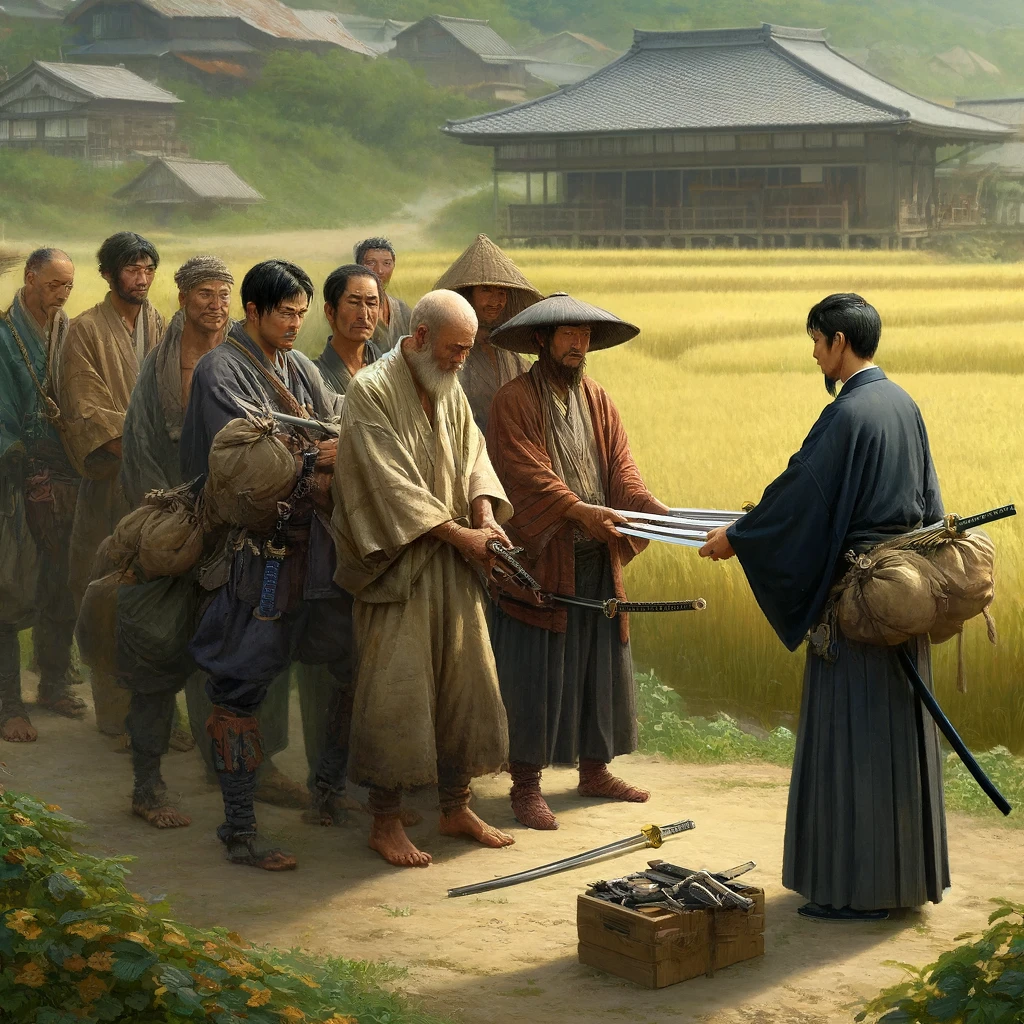
On August 29, 1588, as Japan’s Sengoku period was nearing its end, Toyotomi Hideyoshi issued the groundbreaking policy known as the Sword Hunt Edict. This edict aimed to disarm the peasant class by confiscating all their weapons.
During the Sengoku period, local conflicts were frequent, and peasants were often conscripted into combat, resulting in many farmers possessing weapons for self-defense. However, Hideyoshi decided to confiscate these weapons to eliminate the potential threat of peasant uprisings and to stabilize society. Additionally, the Sword Hunt Edict was implemented to ensure that peasants focused on agriculture, thereby securing stable tax revenues.
The edict was explained to the peasants as being for the construction of a great Buddha, and peasants, agreeing with its sacred purpose, willingly surrendered their weapons. This led to the separation of warriors and farmers, significantly changing Japan’s social structure. Around the same time, the Anti-Piracy Edict was also issued, prohibiting seafaring people from bearing arms. This ensured maritime safety and allowed for the secure navigation of merchant ships.
Unification of Japan in 1590
Toyotomi Hideyoshi achieved the unification of Japan in 1590 through the Siege of Odawara. This battle was aimed at subjugating the Hōjō clan, the last major obstacle for Hideyoshi, who had already subdued many of the powerful daimyo in western Japan. The Hōjō clan was the dominant force in the Kanto region, and their stronghold, Odawara Castle, was an immense fortress with a perimeter of 9 kilometers.
Rather than direct assault, Hideyoshi opted to besiege the castle with overwhelming forces, cutting off supplies of food and water to force a surrender. This tactic succeeded, and in August, the Hōjō clan finally capitulated. The campaign involved participation from prominent figures, including Date Masamune.
Following the successful Siege of Odawara, Hideyoshi conducted the “Osu no Shobun” to bring the northeastern region under control, completing the unification of Japan. After the defeat of the Hōjō clan, Hideyoshi relocated Tokugawa Ieyasu to the former Hōjō domain in Edo, laying the foundation for the Edo period and the development of Tokyo as the capital.
Class Separation Edict in 1591
In 1591, Toyotomi Hideyoshi issued the Class Separation Edict, an important law aimed at stabilizing Japan’s social structure and enhancing productivity. This edict strictly prohibited peasants from switching to other occupations, particularly becoming samurai or merchants. This measure ensured that peasants remained on their land and focused on agriculture, leading to stabilized productivity.
The introduction of this edict advanced the separation of warriors and farmers, making the “one village, one cultivator” system from the Taikō land survey more effective. This system meant that each piece of land was linked to a specific farmer, who was responsible for its production.
Furthermore, the Class Separation Edict established a system that made it difficult for exceptional rises in status, such as Hideyoshi’s own, by restricting movement between social classes. This aimed to maintain social order by fixing each class’s status.
Invasions of Korea in 1592 and 1597 (Bunroku Campaign and Keicho Campaign)
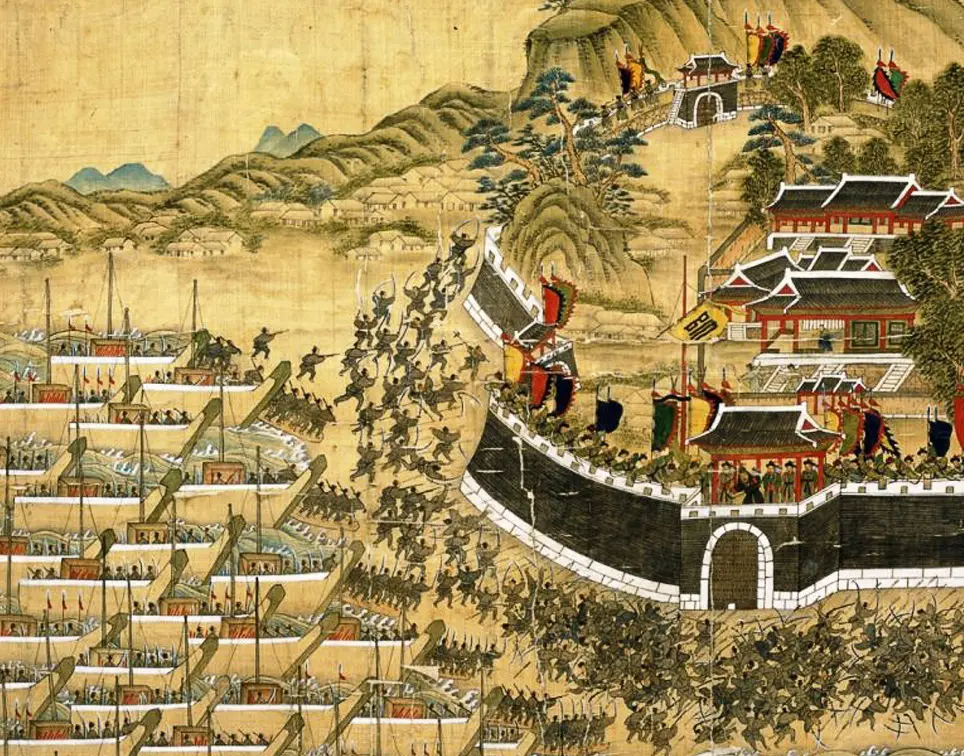
Toyotomi Hideyoshi’s invasions of Korea were significant military endeavors conducted at the end of Japan’s Sengoku period. These invasions took place twice, the Bunroku Campaign in 1592 and the Keicho Campaign in 1597. Hideyoshi’s grand ambition was to conquer the Ming dynasty in China by first subjugating Korea.
The background of the invasions includes Hideyoshi’s desire for further expansion after unifying Japan. He demanded that Korea submit to Japan and assist in the conquest of the Ming dynasty. When Korea refused these demands, Hideyoshi decided to apply military pressure. In early 1592, he sent a large army to the Korean Peninsula, swiftly capturing many regions. However, subsequent resistance from Korean forces and intervention by the Ming dynasty prolonged the conflict.
In 1593, a temporary ceasefire was established, but Hideyoshi launched another invasion in 1597 to solidify Japan’s control over Korea. This second campaign also faced significant challenges, with many Japanese soldiers suffering from hunger and cold. Ultimately, after Hideyoshi’s death in 1598, Japan withdrew from Korea.
Toyotomi Hideyoshi’s Cause of Death
In the spring of 1598, Hideyoshi fell ill, and his condition worsened day by day until he passed away on August 18, 1598. The exact cause of his death remains a mystery, but it is speculated that he died from a “consumptive disease.” Throughout his life, Hideyoshi endured extreme stress, overcoming numerous challenges to rise from humble beginnings to the pinnacle of unifying Japan. He is known to have fought tirelessly for Oda Nobunaga.
Despite being robust and enjoying a rich diet, Hideyoshi might have neglected his health due to overconfidence. The accumulated strain on his body likely led to his illness. Two main theories about his death are kidney failure due to his indulgence in women or a chronic lung disease. Diagnosing conditions like bronchitis and tuberculosis was difficult at that time, leaving the exact cause uncertain.
Regardless of the specific cause, Hideyoshi’s death is attributed to “consumptive disease,” and his intense life is believed to have significantly contributed to his demise. His life as a ruler was marked by both glory and severe fatigue, leading to health issues.
Toyotomi Hideyoshi’s Personality
Toyotomi Hideyoshi is often described as a “charmer.” He was generally cheerful, optimistic, and had a sociable personality that earned him the nickname “Monkey” from his lord and peers. His ability to win people over made him a master of human relations, akin to a person with excellent social skills today.
However, Hideyoshi also exhibited extreme cruelty on the battlefield, which starkly contrasted his charming persona. For example, during the attack on Kōzuki Castle in Harima Province under Oda Nobunaga’s orders, Hideyoshi cut off the water supply and slaughtered the surrendering soldiers. He impaled children and crucified women, an unusually brutal act even for the Sengoku period.
In another instance, Hideyoshi learned of poor sisters in his birthplace of Owari Province who were related to him. He sent a message recognizing them as his sisters and inviting them to the capital. However, upon their arrival, they were arrested and beheaded to erase any trace of his humble origins.
Thus, while renowned for his charm, Hideyoshi also possessed a ruthless and inhumane side. Originally a bright and open person, his ascent from poverty to unification may have led to a drastic change in his character.
Episodes of Toyotomi Hideyoshi
Lastly, let’s take a look at some episodes from the life of Toyotomi Hideyoshi. He has many interesting stories that are worth noting!
Nobunaga’s Sandal Bearer
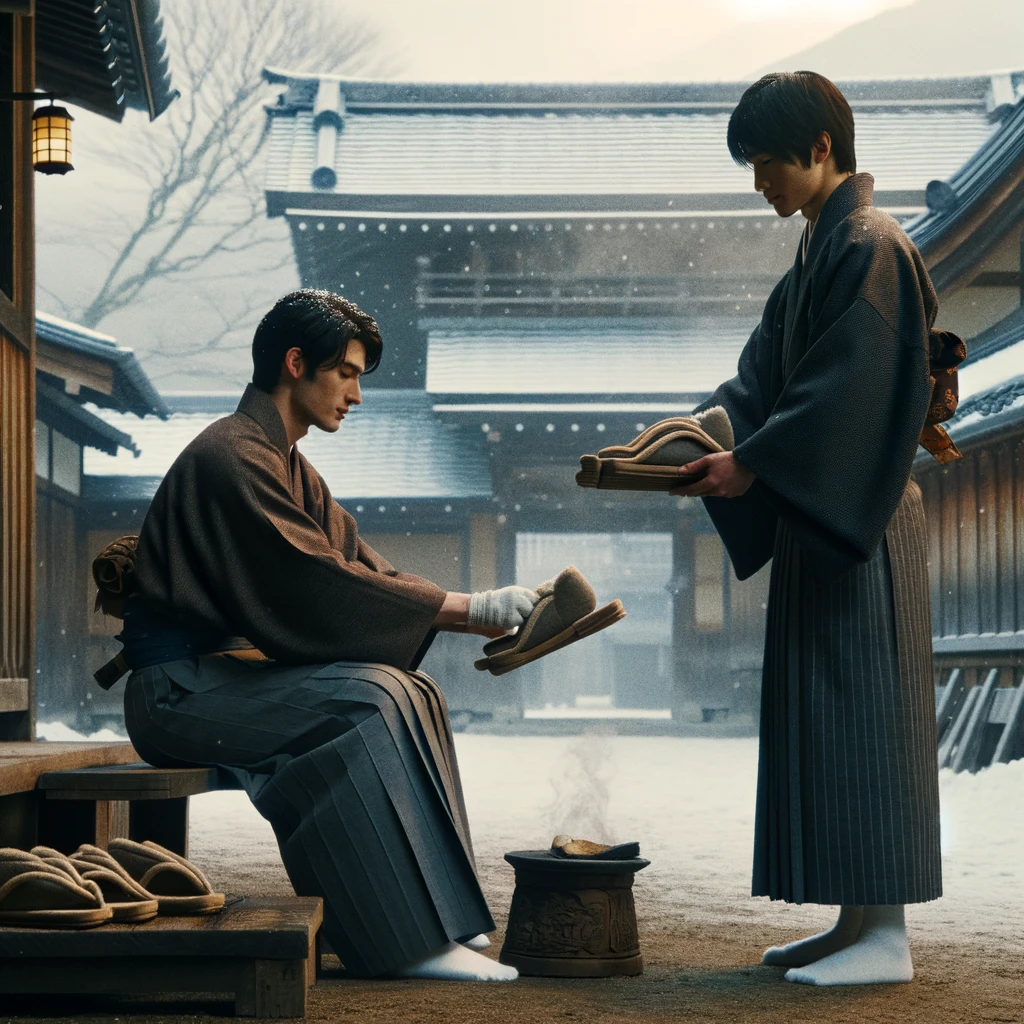
Kinoshita Tōkichirō, who would later become Toyotomi Hideyoshi, worked as Oda Nobunaga’s sandal bearer. One cold winter day, an event occurred that highlighted Tōkichirō’s natural charm and ingenuity.
When Nobunaga ordered Tōkichirō to bring his sandals, Tōkichirō, to prevent Nobunaga’s feet from getting cold, warmed the sandals with his own body. At first, Nobunaga was furious, thinking Tōkichirō had handled the sandals improperly since they were warm. However, Tōkichirō quickly explained his actions by undressing and showing that he had warmed the sandals to ensure Nobunaga’s comfort.
Recognizing his mistake, Nobunaga was impressed by Tōkichirō’s loyalty and cleverness. This episode is considered an important event that demonstrated Tōkichirō’s character and how he began earning Nobunaga’s trust, leading to his future success.
Appeal Tactics
Following the sandal episode, Toyotomi Hideyoshi used unique methods to make himself better understood by Oda Nobunaga’s other retainers. He once hid under a latrine and, when urinated upon, reprimanded the person by saying, “Who dares to urinate on me?” When the person apologized, stating they were unaware of his presence, Hideyoshi responded, “Of course, you did not know. Do not worry.” This incident helped him gain a reputation as an understanding and reasonable person.
In another instance, he wore a haori (shoulder garment) made from orange peels and explained that he sold the peels to buy the garment, further solidifying his reputation as a clever and resourceful individual.
Not Blaming Subordinates for Mistakes
Toyotomi Hideyoshi was adept at managing his subordinates without blaming them for their mistakes. In the Battle of Komaki and Nagakute in 1584, naval commander Kuki Yoshitaka suffered a defeat against Tokugawa Ieyasu but managed to return alive. When Yoshitaka apologized for his failure, Hideyoshi praised him for his return, stating that surviving was an achievement in itself and encouraged him.
This approach deeply moved Yoshitaka, who remained loyal to Hideyoshi and served him until he committed suicide during the Battle of Sekigahara. Such actions demonstrated Hideyoshi’s exceptional ability to win people’s hearts and loyalty.
Master of Hospitality
Toyotomi Hideyoshi was not only skilled at subduing political opponents with force but also excelled at winning them over through hospitality and courteous treatment. An example of this is the visit of Mōri Terumoto to Kyoto in 1588.
Mōri Terumoto was the most powerful daimyo in the Chūgoku region and, while already under Hideyoshi’s control, remained cautious of him. By inviting Terumoto to Kyoto, Hideyoshi tested his loyalty and created an opportunity to get closer.
Upon Terumoto’s arrival, Hideyoshi provided meticulous hospitality. He helped enhance Terumoto’s social status by arranging for official positions, which earned Terumoto honor among other daimyos and courtiers, increasing his trust in Hideyoshi.
Furthermore, Hideyoshi invited Terumoto to tour Kyoto and Osaka, showcasing their cultural and historical attractions. This hospitality made Terumoto’s visit a pleasant experience rather than a mere political obligation.
By inviting Terumoto to social gatherings with prominent figures from various fields, Hideyoshi provided opportunities for Terumoto to build valuable connections and deepen his personal relationship with Hideyoshi. These social events allowed Terumoto to find new allies and reinforced his loyalty to Hideyoshi.
A great lover of women
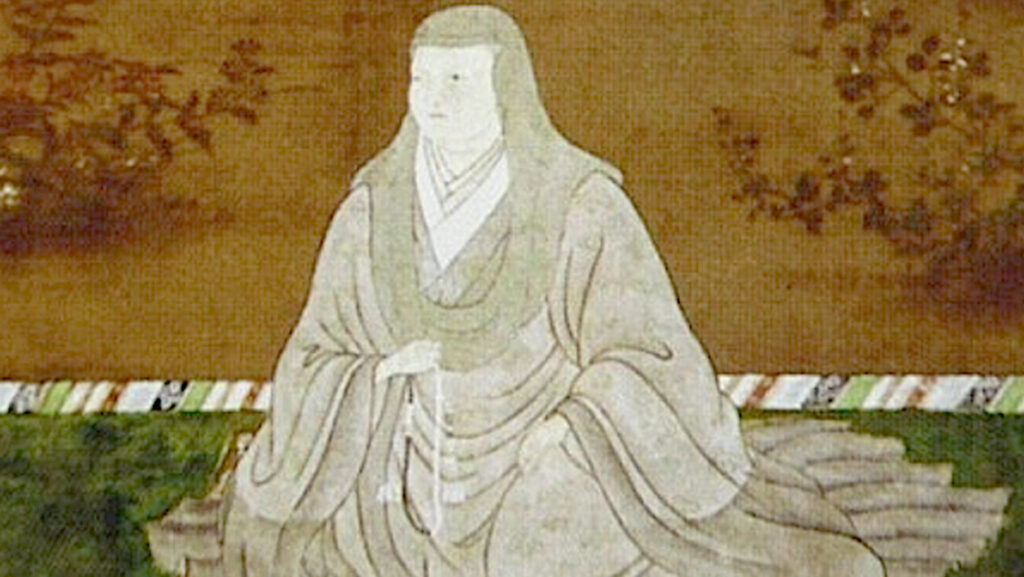
Toyotomi Hideyoshi was known for his love of women and had a flamboyant love life. He is said to have had 13 concubines in addition to his main wife, Nene. Hideyoshi’s primary wife, One (also known as Nene), was the daughter of Sugihara Sadatoshi, and they had no children together. This fact is considered to be a background reason for Hideyoshi having many concubines. The absence of children with his main wife made the existence of concubines crucial for ensuring an heir.
Among his concubines, Yodo-dono was particularly famous. She was the daughter of Azai Nagamasa and bore Hideyoshi his long-awaited legitimate son, Hideyori. Although Yodo-dono is often portrayed negatively in history, the birth of Hideyori was a significant event for Hideyoshi. However, the relationship between Yodo-dono and Hideyori is said to have influenced subsequent political decisions in Japan, as her overprotectiveness allegedly led Hideyori to refuse requests to join the Osaka Campaign.
Relationship with Sen no Rikyū
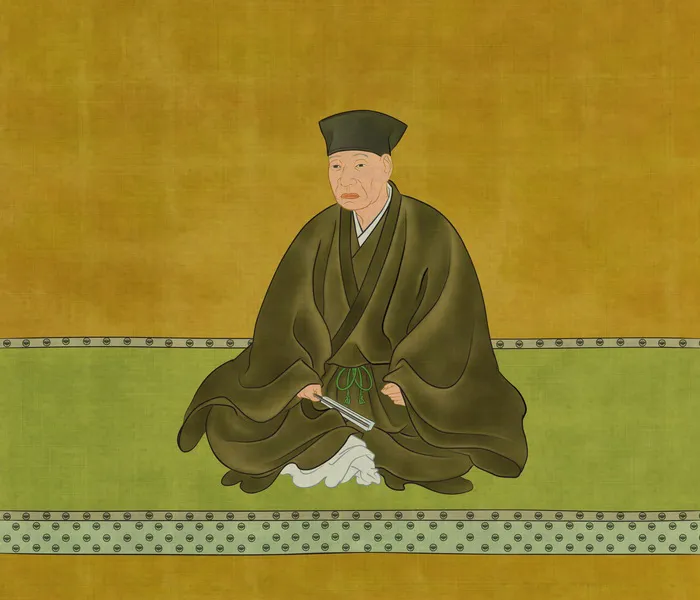
Toyotomi Hideyoshi, who rose from a lowly foot soldier to the ruler of Japan, was also known as a patron of the arts and was said to be well-versed in the tea ceremony. His deep reverence for the tea ceremony led to elevating Sen no Rikyū to an unprecedented influential position as the tea master. Rikyū was not only the host of tea gatherings but also a trusted advisor to Hideyoshi, providing counsel on matters beyond the tea room.
Rikyū’s influence is evident in his involvement in the planning and execution of grand tea gatherings held at Osaka Castle. These tea gatherings were not only a display of Hideyoshi’s power and sophistication but also served as political theater to solidify his rule. These events brought together participants ranging from the emperor and high-ranking samurai to common citizens, demonstrating the unifying power of cultural practices.
The pinnacle of their collaborative relationship may be symbolized by the construction of the “Golden Tea Room,” entirely covered in gold leaf by Hideyoshi. This extravagant display sharply contrasted with Rikyū’s philosophy of “wabi-cha,” which emphasizes simplicity and rustic beauty. Nevertheless, Rikyū’s role in this ceremony demonstrated his ability to balance his aesthetic principles with the demands of serving a powerful and opulent lord like Hideyoshi.
However, the partnership between Hideyoshi and Rikyū ended tragically. In 1591, Hideyoshi ordered Rikyū to commit seppuku (ritual suicide). The reasons for this extreme action remain debated among historians. Officially, Rikyū was accused of illicitly trading tea utensils. Other theories suggest more personal conflicts, such as disagreements over the ownership of certain tea utensils or Rikyū’s refusal to marry his daughter into Hideyoshi’s family. There is also speculation that the aesthetic differences between Hideyoshi’s flamboyance in the tea ceremony and Rikyū’s minimalist style contributed to their rift.
Summary
What did you think? We have explored many aspects of Toyotomi Hideyoshi’s life. From the Battle of Yamazaki, which made Hideyoshi’s name widely known, to the Taiko land survey, the sword hunt edict, the expulsion of Christian missionaries, the unification of Japan, and the invasions of Korea, it was indeed filled with various events. Additionally, we were amazed by the contrast between his charisma and the brutality he displayed on the battlefield. His love for tea ceremonies and women also reflects his human side and personality.
Our website covers various aspects of Japanese history and culture beyond Toyotomi Hideyoshi. If you are interested, we would be delighted if you read our other articles as well!



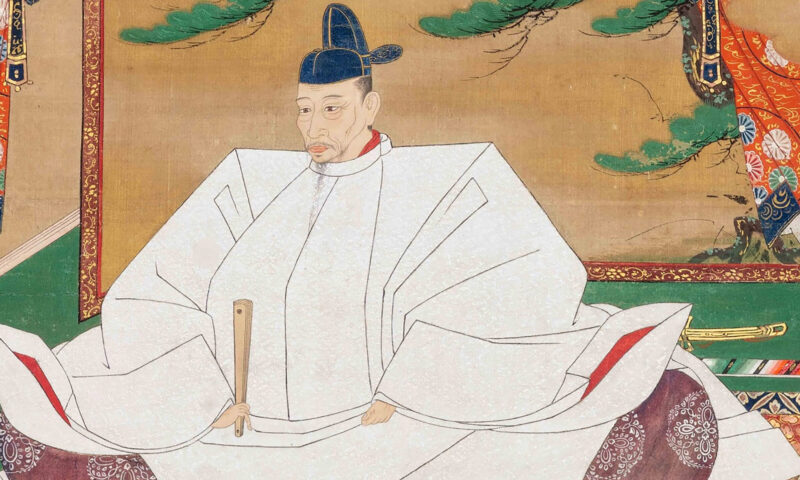



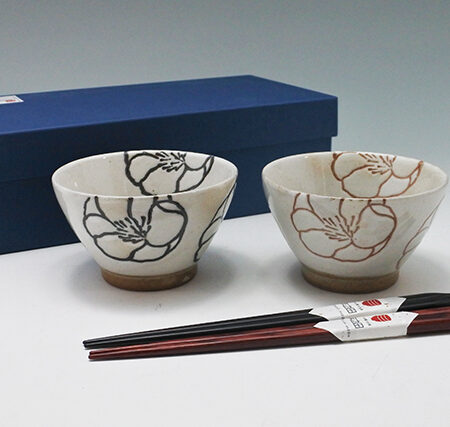
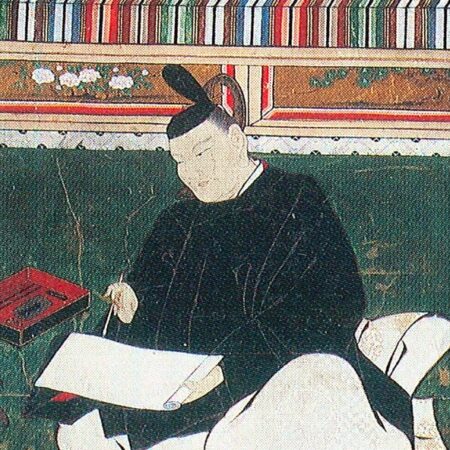
コメント